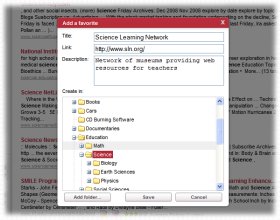|
Education
Web
Viewing 1-3 of 3 total results
HIGH SCHOOL MATHEMATICS CONTENT EXPECTATIONS page 8 of 19 11/07 MICHIGAN DEPARTMENT OF EDUCATION recOMMenDeD: *L1.2.5 Read and interpret representations from various technological sources, such as contour or isobar diagrams. *L2.1.7 Understand the mathematical bases for the diffe...
1
0
HIGH SCHOOL MATHEMATICS CONTENT EXPECTATIONS page 8 of 19 11/07 MICHIGAN DEPARTMENT OF EDUCATION recOMMenDeD: *L1.2.5 Read and interpret representations from various technological sources, such as contour or isobar diagrams. *L2.1.7 Understand the mathematical bases for the differences among voting procedures. *L2.2.4 Compute sums of infinite geometric sequences.
10
0
http://www.michigan.gov/documents/Math11-14-open1_142202_7.pdf#page=10
www.michigan.gov/documents/Math11-14-open1_142202_7.pdf#page=10
HIGH SCHOOL MATHEMATICS CONTENT EXPECTATIONS page 8 of 19 11/07 MICHIGAN DEPARTMENT OF EDUCATION recOMMenDeD: *L1.2.5 Read and interpret representations from various technological sources, such as <span class="highlight">contour</span> or isobar diagrams. *L2.1.7 Understand the mathematical bases <span class="highlight">for</span> the differences among voting procedures. *L2.2.4 Compute sums of infinite geometric sequences.
physical characteristics of places. 6 – G2.1.1 Describe the landform features and the climate of the region (within the Western or Eastern Hemispheres) under study. 6 – G2.1.2 Account for topographic and human spatial patterns (where people live) associated with tectoni...
1
0
physical characteristics of places. 6 – G2.1.1 Describe the landform features and the climate of the region (within the Western or Eastern Hemispheres) under study. 6 – G2.1.2 Account for topographic and human spatial patterns (where people live) associated with tectonic plates such as volcanoes, earthquakes, settlements (Ring of Fire, recent volcanic and seismic events, settlements in proximity to natural hazards in the Western Hemisphere) by using information from GIS, remote sensing, and the World Wide
51
0
http://www.michigan.gov/documents/mde/SSGLCE_218368_7.pdf#page=51
www.michigan.gov/documents/mde/SSGLCE_218368_7.pdf#page=51
physical characteristics of places. 6 – G2.1.1 Describe the landform features and the climate of the region (within the Western or Eastern Hemispheres) under study. 6 – G2.1.2 Account <span class="highlight">for</span> <span class="highlight">topographic</span> and human spatial patterns (where people live) associated with tectonic plates such as volcanoes, earthquakes, settlements (Ring of Fire, recent volcanic and seismic events, settlements in proximity to natural hazards in the Western Hemisphere) by using information from GIS, remote sensing, and the World Wide
numbers to 110; compare using phrases such as “same as”, “more than”, “greater than”, “fewer than”; use = symbol. Arrange small sets of numbers in increasing or decreasing order, e.g., write the following from smallest to largest: 21, 16, 35, 8. N.ME....
1
0
numbers to 110; compare using phrases such as “same as”, “more than”, “greater than”, “fewer than”; use = symbol. Arrange small sets of numbers in increasing or decreasing order, e.g., write the following from smallest to largest: 21, 16, 35, 8. N.ME.01.04 Identify one more than, one less than, 10 more than, and 10 less than for any number up to 100. N.ME.01.05 Understand that a number to the right of another number on the number line is bigger and that a number to the left is smaller. N.ME.01.06 Count
10
0
http://www.michigan.gov/documents/MathGLCE_140486_7.pdf#page=10
www.michigan.gov/documents/MathGLCE_140486_7.pdf#page=10
numbers to 110; compare using phrases such as “same as”, “more than”, “greater than”, “fewer than”; use = symbol. Arrange small sets of numbers in increasing or decreasing order, e.g., write the following from smallest to largest: 21, 16, 35, 8. N.ME.01.04 Identify one more than, one less than, 10 more than, and 10 less than <span class="highlight">for</span> any number up to 100. N.ME.01.05 Understand that a number to the right of another number on the number <span class="highlight">line</span> is bigger and that a number to the left is smaller. N.ME.01.06 Count
24
0
http://www.michigan.gov/documents/MathGLCE_140486_7.pdf#page=24
www.michigan.gov/documents/MathGLCE_140486_7.pdf#page=24
Multiply fluently any whole number by a one-digit number and a three-digit number by a two-digit number; <span class="highlight">for</span> a two-digit by one-digit multiplication use distributive property to develop meaning <span class="highlight">for</span> the <span class="highlight">algorithm</span>. N.FL.04.11 Divide numbers up to four-digits by one-digit numbers and by 10. N.FL.04.12 Find the value of the unknowns in equations such as a ÷ 10 = 25; 125 ÷ b = 25.* N.MR.04.13 Use the relationship between multiplication and division to simplify computations and check results. N.MR.04.14
|
